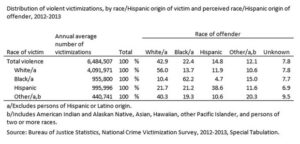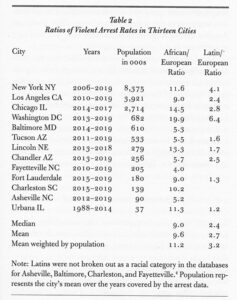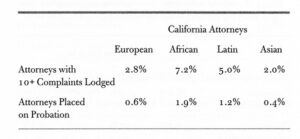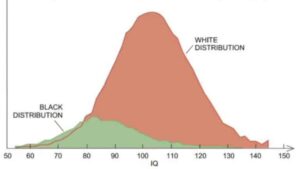Jon published these books:
* Taboo: Why Black Athletes Dominate Sports and Why We’re Afraid to Talk About It, 2000
* Pension Fund Politics: The Dangers of Socially Responsible Investing, 2005
* Scared to Death: How Chemophobia Threatens Public Health, 2011
* Let Them Eat Precaution: How Politics is Undermining the Genetic Revolution, 2006
* Abraham’s Children: Race, Identity and the DNA of the Chosen People, 2008
* No Crime But Prejudice: Fischer Homes, the Immigration Fiasco, and Extrajudicial Prosecution, 2009
* Crop Chemophobia: Will Precaution Kill the Green Revolution? 2011
Jon’s archive at GLP.
In 2011, Jon launched the Genetic Literacy Project. In my eyes, Jon is a giant. I think his books, talks, and website only do good. He strikes me as scrupulously fair. I spoke to him Tuesday afternoon, June 22, 2021. Though I had about 25 planned questions, I got to almost none of them. Instead, I asked things on the fly.
I planned to begin by asking Jon to describe the through-line of his work, but once the show started and music played, I went off on a new direction.
This is a partial transcript, lightly edited.
Luke: “Your first book grew out of a documentary you made with Tom Brokaw (Black Athletes: Fact and Fiction, 1989).”
Jon: “I was a TV producer for NBC news, including a long stint as Tom Brokaw’s producer, and one day he and I were in a friendly argument about why so many sports were dominated, increasingly, by African-American athletes. The world’s track and field scene had almost been taken over by black Africans and blacks of African descent. I was saying it was genetics. He was saying, no, it’s escaping the ghetto. They’re trying to overcome cultural and financial issues. After much discussion, he got management to overcome their reluctance, to make Black Athletes: Fact and Fiction. It was a huge success. It touched off an international debate, hundreds of articles. It got us into some hot water because we dared to suggest that there were genetic, hard-wired differences between populations. Out of that came a book contract for Taboo: Why Black Athletes Dominate Sports and Why We’re Afraid to Talk About It. I like to take on controversial subject where I think political correctness is putting a cap on what we’re allowed to say. The genetics of human differences is so important because so many diseases affect one population more than another.”
Luke: “People who make TV aren’t morons.”
Jon: “Some news people are among the smartest people I’ve come across. It’s not just showmanship. To be a good TV news journalist at the highest level, you have to go through a winnowing out process where the lower IQs as you call it get phased out.”
“News producers are the journalists who work the beat, do the gumshoe investigations. I was in longer-form pieces. We did the background work, the interviewing and the writing. Talking heads [pundits] are the blow-hard section. It’s a different discipline than the hard news section I grew out of.”
Luke: “There’s groupthink in every profession, including journalism.”
Jon: “There’s a lot of conformity even when journalists believe that they are asking out of the box questions… I’m liberal-minded. I believe climate change is one of the most pressing problems of our time… I certainly reject Trumpism, which is really frightening, autocratic and totalitarian. There is a political correctness that dominates journalism. It’s a liberal bias. It’s a reason mainstream journalists did not anticipate Trump winning the election in 2016. They were out of touch with the majority of America… There’s not enough room for heterodoxy. I think I’m a heterodox by nature. I used to have a column for Forbes magazine called The Contrarian. I’m a believer of a Greek way of thinking, Epoche, framing. You try to look at every new idea and frame it, see it devoid of as many prejudicial inputs as you can. And when you do that, you come up with new views and sometimes your views even disconcert you. Sometimes I’m uncomfortable with what the facts tell me.”
With regard to Covid, Jon says: “Opening up earlier and focusing only on higher-risk populations would have served our country better than the way that the liberal intelligentsia thought…”
Luke: “How many people did you meet in the MSM who regarded abortion as murder?”
Jon: “I’m not sure I can say anyone.”
Luke: “Zero. I’ve talked to all sorts of journalists who can’t name one person in their profession who hold a view held by about 40% of the population.”
David Wallace-Wells published Mar. 15, 2021 in New York magazine:
Sridhar is pointing her finger at British authorities, but in her diatribe you could comfortably substitute for the U.K. almost any nation in Europe. In its broad strokes, the picture has been the same in Belgium and France and Italy and the Czech Republic, too, in Portugal and Poland, Sweden and Switzerland and Spain, even Germany and the Netherlands, and dozens of other countries across the Continent. From the spring panic through the fall surge, pandemic policy differed nation to nation, but failure was general all across Europe. Aside from the three Nordic outliers of Finland, Norway, and Iceland, no European state has managed the coronavirus well by global standards — or by their own much higher ones.
For decades, the richest nations of the world had told themselves a story in which wealth and medical superiority offered, if not total immunity from disease, then certainly a guarantee against pandemics, regarded as a premodern residue of the underdeveloped world. That arrogance has made the coronavirus not just a staggering but an ironic plague. Invulnerability was a myth, of course, but what the pandemic revealed was much worse than just average levels of susceptibility and weakness. It was these countries that suffered most, died most, flailed most. Gave up most easily, too, acquiescing to so much more disease that they might have been fighting a different virus entirely. For nearly the entire year, the COVID epicenter was not in China, where the pathogen originated, or in corners of South Asia or sub-Saharan Africa, where limited state capacity and medical infrastructure seemed, at the outset, especially concerning, but either in Europe or the United States — places that were rated just one year ago the best prepared in the world to combat infectious disease.
This fact, though not unknown, is probably the most salient and profound feature of what has been a tremendously uneven pandemic with the world’s longtime “winners” becoming by far its biggest losers. The gold-standard responses were those in East Asia and Oceania, by countries like South Korea, New Zealand, and Australia — countries that saw clearly the gravest infection threat the world had encountered in a century and endeavored to simply eradicate it within their borders. Mostly, they succeeded. When it mattered most, no nation in what was once grandly called “the West” even really bothered to try.
The virus is the virus,” says Gregg Gonsalves, the former AIDS activist turned epidemiologist, now a MacArthur “genius” with a public-health position at Yale. “There’s ways to stop it, and then there’s …” He pauses for a moment. “It has its own logic and its own trajectory.”
In the U.S., the story of the pandemic year has been dominated by the character of the president who presided over it so ineptly, often with such indifference it seemed he was rooting for the disease. But the problem with assigning Donald Trump all, or even most of, the blame for America’s suffering is that the country’s failure isn’t unique. In fact, before the arrival of vaccines, the American experience of the coronavirus was not exceptional but typical — at least among those European nations it typically considers its peers. And as the New Year has brought a new administration, experts in fields from public health to economics have grown more comfortable acknowledging that catastrophe was much bigger and deeper than the denier-in-chief and indeed much more “normal” than Americans outraged or mourning are likely to understand.
The metric of deaths per capita is crude, obscuring issues of demography and comorbidity, but by this basic standard the U.S. has suffered less than the U.K., Portugal, and the Czech Republic. It sits clustered with a number of other European nations — Italy, Spain, France — near the E.U. average. The South American average is just below.
Jon: “Covid should humble anyone. It was something nobody could control… This disease confounded everyone. The narrative that emerged is heavily skewed…”
Luke: “How did you realize that the reason certain athletes dominates certain sports [has a genetic component]?”
Jon: “When I was about 19, Sports Illustrated had a cover story [Jan. 18, 1971] on why blacks are coming to dominate certain sports. In ten years, the NBA had gone from 10% black to 80%, the NFL had gone from 10% black to 60%, in baseball from 10% to 30% if you count black latinos… I was prized at NBC because I was considered an out of the box thinker and I had the trust of Tom Brokaw and upper management. Sometimes they were surprised because I would have an unpredictable take on things. One thing that became clear [regarding sports], is that it was not a black white thing, but it had to do with body types and ancestry. Running is the ultimate laboratory for seeing differences among populations… The top 200 or so athletes in 100 meter to 400 meter events has West African ancestry, but there is not one person of West African ancestry who is an elite 800 meter runner [or longer]. These longer events are dominated by East Africans. The best East African 100 meter runner is like 4,600.”
“This issues go far beyond sports… Sports become an emblem for discussing human differences… If you are black and you need a bone marrow transplant and you go to a hospital and they tell you we can’t give you a bone marrow transplant because the only bone marrow we have is from whites and if we give it to you, it’s going to be rejected by your body… That fascinated me that we are willing to deny the nose in front of our face [aka human differences].”
Luke: “How did you pull off being heterodox and working well with other people at elite levels?”
Jon: “The liberal magazine Slate ran a positive review of my book and its general theme was how is Jon Entine able to write a book like this, not lose his career, and not get threaten with death. They compared it with Jimmy the Greek Snyder getting fired for saying black and white differences result from the slave trade… I was lucky. I think it was because I was an honest broker. I have sections that talk about intelligence differences. I talk about what the data says.
“I was giving a talk in Seattle or Portland once and this white guy gets up and says you’re really racist if you suggest that there are black white hard-wired differences. Two blacks got up together and said, ‘What is this white guy telling me as a black person what I should think? I’ve read his book. It’s honest, enlightened. It provoked deep thinking. You’re the racist for trying to squelch this discussion. He laid his cards on the table and invited a discussion.'”
“I did over 500 TV and radio interviews and over 400 print interviews. It was the most heavily reviewed book over a two year period when it came out. There was a chance to discuss these things. We have now regressed in talking about human differences so I don’t think I could get that book published today, even though it was widely endorsed by everything from Scientific American to Human Biology magazine to the American Journal of Physical Anthropology…to Ebony magazine.”
“I was willing to face the world of hard knocks. I was willing to take fire. And people appreciated that.”
“My agent said you should write a follow-up book on genetics. You know how to write about inflammatory subjects that allows the flame to burn but it doesn’t consume you. You should do a book on Jews. Jews buy books and they also get genetic diseases. It’s the perfect match.
“My sister had been diagnosed with breast cancer. It turned out she had a genetic version of breast cancer that traces back to her Ashkenazi ancestry… She ultimately died of pancreatic cancer linked to her Ashkenazi ancestry.”
“I decided to do the same [genetics] issue. Jews were defined as a race, and they defined themselves as a race up until WWII. The whole experience with the Holocaust and genocide linked to race identity, for the first time ever separated the connection between Jews and race. I thought this was fascinating. There are so many benefits from understanding this. There are so many disorders linked to our race, our population ancestry…”
“What distinguished Christianity and Islam from Judaism is that they unmoored religion from ancestry. Blood in the New Testament means faith. Blood in the Old Testament means blood [and ancestry]. All religions were tribal religions until Jesus. The only tribal religions today of note are Judaism and Zoroastrianism… I’m an atheist but I was raised Jewish. I majored in Religion at Trinity College… I thought the genetics entre into talking about religion was a uniquely interesting way to talk about the same issues I raised in Taboo.”
Luke: “Part of the reason for your success in talking about human differences in a way that hasn’t got you canceled is that you have mastered the rhetoric of the elite. I don’t know anyone who is not elite who uses the word ‘problematic.'”
Jon: “Nothing pleases me more than sticking my finger in the eyes of liberal elitists. I’ve spent a lot of my time over the past ten years about human modified crops. We’re empowering the developing world to deal with the effects of climate change and less arable land and giving them control over their food destiny, and who’s opposed to it? Crazy liberals who have swallowed the myth of naturalism… I try to look at each situation and be fearless where the facts take me.”
Luke: “What is your IQ?”
Jon: “I don’t know. I think I was in the low 130s based on my SATs (1520, much higher in math than verbal).”
Luke: “What was your college GPA?”
Jon: “In Philosophy, I was 4.0. In other classes, I didn’t mind getting a B.”
“I’m good friends with Charles Murray [and Steve Sailer]. I work with the Aspen Institute, a Left organization. What they all share? They’re willing to think out of the box.”
“I had no intention of becoming a writer. I had no confidence in my writing abilities and then I went through a transformation. I dropped out of college to work for George McGovern. I went through a transformative spiritual awakening that didn’t draw me to religion but it drew me to question how I view the world. I became attracted to philosophy and to the philosophy of religion. It changed the structure of my brain. I became a lover of Socrates and Plato. I was disdainful of Aristotle but in my old age I’ve become much more Aristotelian because I want to get things done, not just debate them. That inquisitiveness is missing in journalism today. They start out with a conclusion and find the facts to reinforce that conclusion.”
“I dropped out of college in my sophomore year. I had done a little acid dropping, about five or six times, and smoked a little marijuana. I did not take pills. I read every book that Freud wrote. I got into Psychiatry graduate school never having taken a Psychology course because I thought Psychology as it was taught was a gutter subject. I thought Sociology was the bottom of the heap.”
“It opened my mind to think in different ways. One week, I was more Freudian. Another week I applied Hegelian philosophy to psychological issues. From my sophomore year into my junior year that began a change in the way I look at the world. I’ve found there’s a whole community of heterodox thinkers. There’s a website called Quillette. That’s my community. I love that place. People willing to go where the evidence takes them.”
After dropping out of college in December of 1971, Jon worked in construction after the campaign, and then he took a job as a helper at the Lyme Inn in New Hampshire. “I got the top floor. I had about 60 books. I read every one of them. I read a book or three a week. That summer is when I had the experience that I think differently about the world. It changed my college experience. I was a mediocre student, and suddenly, whenever I wanted an A, I got an A. My mind was different. I absorbed information like a sponge. Before, I was in hand to hand combat with information.”
“I hadn’t taken drugs in a year. The drugs I took were in my freshman year. Drugs began to fracture, I was an unreflective person. I realized I didn’t have a worldview. I didn’t need a worldview where everything fits together. I needed a worldview about dialogue. I needed a dialogue with ideas. I needed to always be open to learning, even from people I didn’t agree with. The year before, when I was coming down from an acid trip, I was in a park in Denver, it was a weird disassociated period and I got challenged by a Jesus Freak. I was a Jewish kid who rejected religion. The idea of adopting Christianity as a religion was anathema to me, but I thought, I need to open up to new ways of thinking. This turned me into being a religion major. I decided to explore Christianity in a respectful way. It set me on a path of challenging my deepest prejudices.”
“I took a semester off, took summer classes at Dartmouth, caught up, [returned to Smith College in September of 1972), and graduated on time.”
Luke: “Did the experience of sex have a transformative effect?”
Jon: “No. I was fairly conservative. I don’t think I had intercourse until my second year, I was well behind others.”
After his spiritual transformation, Jon returned to college feeling confident in his own skin for the first time and developed “a ton more friends… Within a month of coming back, I developed an amazing relationship with a woman who became my college girlfriend. That was profound.”
“I worked 20 hours a week writing, editing and producing the local 11pm news for the NBC station in my freshman year.”
“I’m a little uncomfortable with some of the directions we are going in because I’m not that special.”
“I respect conservatism. Trumpism is a disease. I’m a free thinker. Ronald Reagan was a great president. He pushed back against excesses.”
“I’m pro-fracking and pro nuclear energy because I am concerned about climate change. I support solar, but I am not foolish enough to believe that we can abandon fossil fuels.”
“What I hate about Trumpers is that they are illiberal in the same way a lot of liberals are illiberal.”
Regarding Abraham’s Children: Race, Identity and the DNA of the Chosen People, Jon says: “I had no problem finding heterodoxical thinkers about the religious world, among ethicists, in other areas… You will understand multiple sides of an issue, no matter where I go. It’s not an ideological treatise.”
Luke: “Is one way of understanding your work is that you are a translator of abstract academic work and you make it understandable for ordinary people?”
Jon: “That’s perfect. And contrarian out of the box thinking about things that many people think are settled.”
Luke: “To most people, ‘organic’ means good, but academics will say it has no meaning.”
Jon: “It has no meaning and it has ideological meaning. Is a telegraph machine the best way to communicate? We are far beyond that. In communications, we have evolved, but we embrace as superior technology in agriculture that is a hundred years old? Some ideas in organics might be of interest such as soil health, but its practice are harebrained from a 2021 perspective. Buzzwords like ‘organic’ and ‘sustainability’ is often about imposing standards formulated a hundred years ago.”
Luke: “I have a lot of friends who think that that which is natural is good, that which is artificial is bad, and I don’t know how to respond.”
Jon: “Corona viruses are good and vaccines are bad? If they are locked into that thinking, there’s no way out. I’d say, Oh good, I’m going to make you a lysteria burger and you tell me how good it is. I’ll make you an e-coli salad and you tell me how good it is.”
“Every year, according to Wikipedia, over 200 people die in the United States from food poisoning from natural and organic products. How many people have died in the history of the world from bio-technology in agriculture? Zero. Naturalism is the pagan religion of our times.”
“The anti-vaccine movement was primarily a liberal movement and a Jewish Orthodox community. They’re both rigid thinking people. Everything should be natural and vaccines are not natural… The moment that Trump became a symbol of vaccine rejection, you rarely hear a peep from the liberal anti-vaxx movement. If you are pro vaccine, you are pro bio-engineering. Insulin is bio-tech created. The same way you create a bio-tech crop is the same way you create a bio-tech vaccine.”
“We allow any comments on GLP if people are linking to real sources, but if they’re linking to junk science, we’ll delete it. If they’re linking to Joseph Mercola, an anti-vaxxer, we won’t allow that on our site.”
Luke: “What are the standards for getting on GLP?”
Jon: “Good journalism.”
Luke: “Have modern agricultural practices increased or decreased the nutritional value of food?”
Jon: “Both… Fresh frozen food is often better than fresh because you freeze in nutrients and they don’t deteriorate, even though frozen vegetables are considered processed food, they often have more nutritional value than fresh vegetables.”
Luke: “What is science?”
Jon: “Science is not a set of answers. Science is a set of questions. Science is how you approach things. People use ‘science’ to mean ‘facts’, when it should be used to describe a process of evaluating things. It’s a methodology of inquiry, evidence-based thinking.”
“‘Follow the science’ means follow what I’m telling you. The phrase has no scientific meaning.”
Luke: “Should Big Tech try to squash anti-vaccine opinions?”
Jon: “That’s a tough one.”





